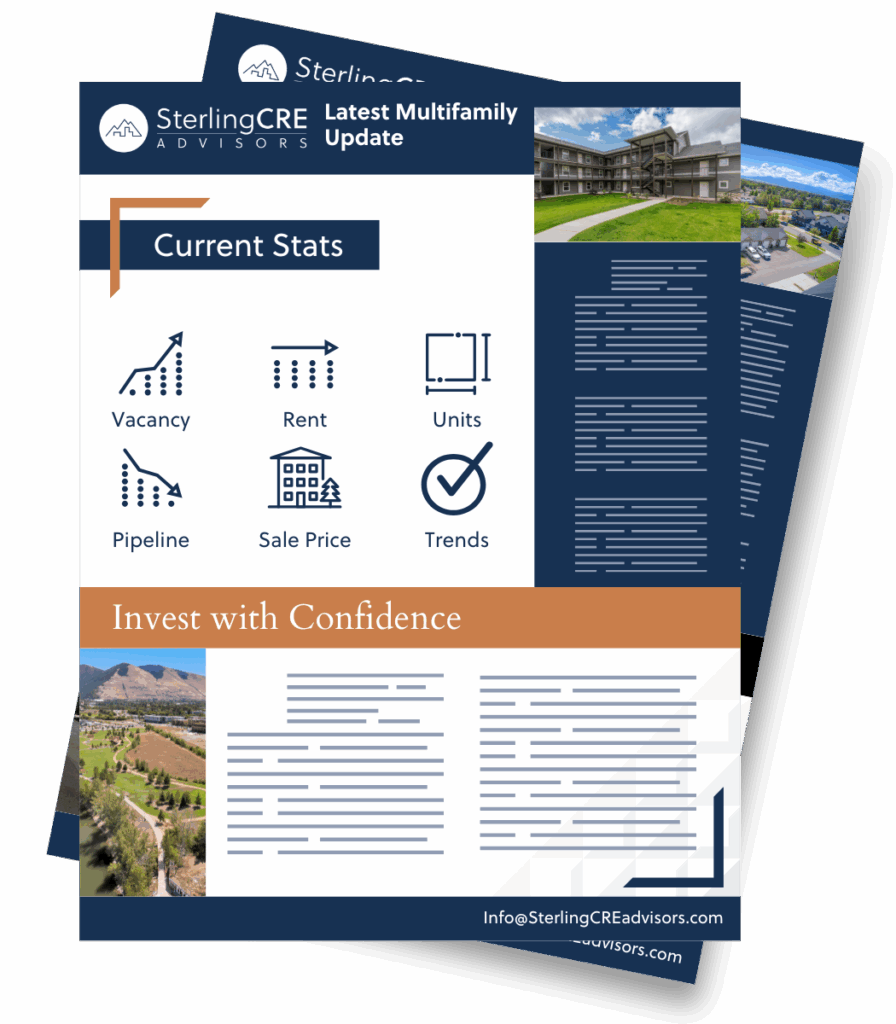The stock market is in flux, so where should you be investing your money?
With signs of the treasury yield curve inverting, investors are starting to get jitters about where the stock market is headed. The reason is that every time the yield curve between the 2yr Treasury and 10 year Treasury has inverted since 1975, a recession has followed soon after.
This graph shows that a slight inversion took place this past week between the 2 year and 5 year Treasury which likely contributed to the stock market sell-off. (credit: The Daily Shot)
Is it time to panic? No. But it is a prudent time to think long term and prepare for a market slowdown.
What are some strategies that can incorporate commercial real estate investments into your portfolio as a hedge against downturns?
Regardless of the market, Sterling CRE advises its clients to focus on the fundamentals of commercial investment property. The use of realistic, market-supported rental rates and data-driven vacancy and expense assumptions are crucial in creating ideal investment outcomes. Stress testing your investments as a sanity-check of your assumptions is also a great way sure up your portfolio.
So, what are some options to diversify your portfolio and batten down the hatches for a slow period?
Single-tenant, net-leased (STNL) investment properties to national credit tenants are a very stable investment avenue in slower markets. A few good examples of STNL investment properties would be a standalone building leased to Starbucks, CVS, Walgreens, O’Reilly Auto Parts or corporate-owned restaurant chains, among others. They provide a portfolio addition that is generally steady in all markets. These types of investments are low risk, but also low return. Because the leases on these properties are typically 10, 15 and 20 years long, they provide a way to ride out periods of deceleration in the economy. The downside to these assets is that financing can be difficult to make pencil and are often the territory of cash buyers.
Well-maintained apartment buildings with sound fundamentals also tend to perform well in down markets. However, those properties with over-optimistic vacancy assumptions, poor management or deferred maintenance items expose the owner to additional risk and should be avoided at this stage in the real estate market cycle.
However, what many investors find attractive is that, like self storage, empty apartments can generally be filled in any economy if lease rates are reduced. So, while that may temporarily hit your overall cash flow position in the property, the odds of going belly-up on the investment are much less likely. Apartments, like STNL investments, are relatively low-risk and low-return. Apartments can provide a slight step up in return over STNL when government-backed financing arrangements such as Fannie Mae, Freddie Mac or HUD lending programs are used.
Self-storage facilities also tend to perform well in economic slow times. As household size grows (due to kids staying with parents longer, multiple generations living in one house, people taking on additional roommates), people tend to move their “stuff” out of their living space and into storage units. This is true for businesses, too, that realize that self-storage space is often much cheaper than renting additional commercial office space. The flexible nature of self-storage leases are also attractive to tenants.
Regardless of the market, Sterling CRE advises its clients to focus on the fundamentals of commercial investment property.
As with apartments, well-managed self-storage facilities with little deferred maintenance provide a solid hedge for slow times.
Compare that to a multi-tenant office or retail space with short lease terms remaining to non-credit tenants. In that scenario, a market slowdown may cause one of your tenants to go out of business, leaving you with vacant space for a long time. Even at severely reduced rates, it can be difficult to re-tenant some commercial spaces during a slow economy. So, while there will always be demand for commercial space, it can be a higher risk investment. This higher risk is usually reflected in the higher cap rates that the properties are acquired at in the first place.
For assistance in building a commercial real estate investment strategy in Missoula or anywhere in Montana, you’re invited to contact a Sterling CRE advisor today.
285 Rodeo Drive, Florence, MT – Cigna Corp Subsidiary Leased Investment

